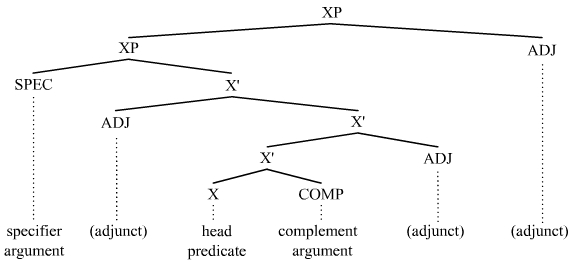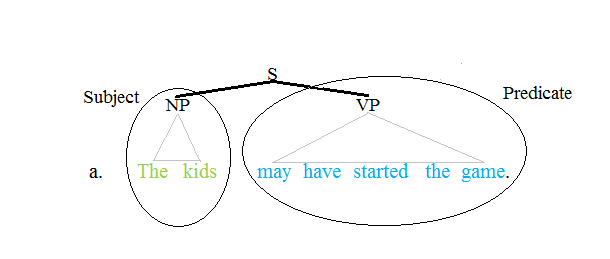|
Al-Sayyid Bedouin Sign Language
Al-Sayyid Bedouin Sign Language (ABSL) is a village sign language used by about 150 deaf and many hearing members of the al-Sayyid Bedouin tribe in the Negev desert of southern Israel. As deafness is so frequent (4% of the population is deaf, compared to 0.1% in the United States) and deaf and hearing people share a language, deaf people are not stigmatised in this community and marriage between deaf and hearing people is common. ABSL grammar developed quickly, with the signing of each generation becoming more complex than the last. Even though no evidence of phonological structure was found throughout the community, it seems to be emerging within individual families. History In 2004 the Al-Sayyid community numbered around 3,000, most of whom trace their ancestry to the time the village was founded, in the mid-19th century, by a local woman and an Egyptian man. Two of this founding couple's five sons carried a gene for nonsyndromic, genetically recessive, profound pre-lingual ... [...More Info...] [...Related Items...] OR: [Wikipedia] [Google] [Baidu] |
Israel
Israel (; he, יִשְׂרָאֵל, ; ar, إِسْرَائِيل, ), officially the State of Israel ( he, מְדִינַת יִשְׂרָאֵל, label=none, translit=Medīnat Yīsrāʾēl; ), is a country in Western Asia. It is situated on the Eastern Mediterranean, southeastern shore of the Mediterranean Sea and the northern shore of the Red Sea, and Borders of Israel, shares borders with Lebanon to the north, Syria to the northeast, Jordan to the east, and Egypt to the southwest. Israel also is bordered by the Palestinian territories of the West Bank and the Gaza Strip to the east and west, respectively. Tel Aviv is the Economy of Israel, economic and Science and technology in Israel, technological center of the country, while its seat of government is in its proclaimed capital of Jerusalem, although Status of Jerusalem, Israeli sovereignty over East Jerusalem is unrecognized internationally. The land held by present-day Israel witnessed some of the earliest human occup ... [...More Info...] [...Related Items...] OR: [Wikipedia] [Google] [Baidu] |
Object (grammar)
In linguistics, an object is any of several types of arguments. In subject-prominent, nominative-accusative languages such as English, a transitive verb typically distinguishes between its subject and any of its objects, which can include but are not limited to direct objects, indirect objects, and arguments of adpositions ( prepositions or postpositions); the latter are more accurately termed ''oblique arguments'', thus including other arguments not covered by core grammatical roles, such as those governed by case morphology (as in languages such as Latin) or relational nouns (as is typical for members of the Mesoamerican Linguistic Area). In ergative-absolutive languages, for example most Australian Aboriginal languages, the term "subject" is ambiguous, and thus the term "agent" is often used instead to contrast with "object", such that basic word order is often spoken of in terms such as Agent-Object-Verb (AOV) instead of Subject-Object-Verb (SOV). Topic-prominent lan ... [...More Info...] [...Related Items...] OR: [Wikipedia] [Google] [Baidu] |
Conditional Sentence
Conditional sentences are natural language sentences that express that one thing is contingent on something else, e.g. "If it rains, the picnic will be cancelled." They are so called because the impact of the main clause of the sentence is ''conditional'' on the dependent clause. A full conditional thus contains two clauses: a dependent clause called the ''antecedent'' (or ''protasis'' or ''if-clause''), which expresses the condition, and a main clause called the ''consequent'' (or ''apodosis'' or ''then-clause'') expressing the result. Languages use a variety of grammatical forms and constructions in conditional sentences. The forms of verbs used in the antecedent and consequent are often subject to particular rules as regards their tense, aspect, and mood. Many languages have a specialized type of verb form called the conditional mood – broadly equivalent in meaning to the English "would (do something)" – for use in some types of conditional sentences. Types of conditio ... [...More Info...] [...Related Items...] OR: [Wikipedia] [Google] [Baidu] |
Complementizer
In linguistics (especially generative grammar), complementizer or complementiser (glossing abbreviation: ) is a functional category (part of speech) that includes those words that can be used to turn a clause into the subject or object of a sentence. For example, the word ''that'' may be called a complementizer in English sentences like ''Mary believes that it is raining''. The concept of complementizers is specific to certain modern grammatical theories; in traditional grammar, such words are normally considered conjunctions. The standard abbreviation for ''complementizer'' is C. Category of C C as head of CP The complementizer is often held to be the syntactic head of a full clause, which is therefore often represented by the abbreviation CP (for ''complementizer phrase''). Evidence that the complementizer functions as the head of its clause includes that it is commonly the last element in a clause in head-final languages like Korean or Japanese, in which other heads fol ... [...More Info...] [...Related Items...] OR: [Wikipedia] [Google] [Baidu] |
Grammar
In linguistics, the grammar of a natural language is its set of structural constraints on speakers' or writers' composition of clauses, phrases, and words. The term can also refer to the study of such constraints, a field that includes domains such as phonology, morphology, and syntax, often complemented by phonetics, semantics, and pragmatics. There are currently two different approaches to the study of grammar: traditional grammar and theoretical grammar. Fluent speakers of a language variety or ''lect'' have effectively internalized these constraints, the vast majority of which – at least in the case of one's native language(s) – are acquired not by conscious study or instruction but by hearing other speakers. Much of this internalization occurs during early childhood; learning a language later in life usually involves more explicit instruction. In this view, grammar is understood as the cognitive information underlying a specific instance of language productio ... [...More Info...] [...Related Items...] OR: [Wikipedia] [Google] [Baidu] |
Argument (linguistics)
In linguistics, an argument is an expression that helps complete the meaning of a predicate, the latter referring in this context to a main verb and its auxiliaries. In this regard, the '' complement'' is a closely related concept. Most predicates take one, two, or three arguments. A predicate and its arguments form a ''predicate-argument structure''. The discussion of predicates and arguments is associated most with (content) verbs and noun phrases (NPs), although other syntactic categories can also be construed as predicates and as arguments. Arguments must be distinguished from adjuncts. While a predicate needs its arguments to complete its meaning, the adjuncts that appear with a predicate are optional; they are not necessary to complete the meaning of the predicate. Most theories of syntax and semantics acknowledge arguments and adjuncts, although the terminology varies, and the distinction is generally believed to exist in all languages. Dependency grammars sometimes call arg ... [...More Info...] [...Related Items...] OR: [Wikipedia] [Google] [Baidu] |
Animacy
Animacy (antonym: inanimacy) is a grammatical and semantic feature, existing in some languages, expressing how sentient or alive the referent of a noun is. Widely expressed, animacy is one of the most elementary principles in languages around the globe and is a distinction acquired as early as six months of age. Concepts of animacy constantly vary beyond a simple animate and inanimate binary; many languages function off of a hierarchical general animacy scale that ranks animacy as a "matter of gradience". Typically (with some variation of order and of where the cutoff for animacy occurs), the scale ranks humans above animals, then plants, natural forces, concrete objects, and abstract objects, in that order. In referring to humans, this scale contains a hierarchy of persons, ranking the first- and second-person pronouns above the third person, partly a product of empathy, involving the speaker and interlocutor. Examples The distinction between ''he'', ''she'', and other per ... [...More Info...] [...Related Items...] OR: [Wikipedia] [Google] [Baidu] |
Predicate (grammar)
The term predicate is used in one of two ways in linguistics and its subfields. The first defines a predicate as everything in a standard declarative sentence except the subject, and the other views it as just the main content verb or associated predicative expression of a clause. Thus, by the first definition the predicate of the sentence ''Frank likes cake'' is ''likes cake''. By the second definition, the predicate of the same sentence is just the content verb ''likes'', whereby ''Frank'' and ''cake'' are the arguments of this predicate. Differences between these two definitions can lead to confusion. Syntax Traditional grammar The notion of a predicate in traditional grammar traces back to Aristotelian logic. A predicate is seen as a property that a subject has or is characterized by. A predicate is therefore an expression that can be ''true of'' something. Thus, the expression "is moving" is true of anything that is moving. This classical understanding of predicates ... [...More Info...] [...Related Items...] OR: [Wikipedia] [Google] [Baidu] |
Jordanian Sign Language
Levantine Arabic Sign Language, also known as Syro-Palestinian Sign Language, is the sign language used by Deaf and hearing people of Jordan, Palestine, Syria, and Lebanon Lebanon ( , ar, لُبْنَان, translit=lubnān, ), officially the Republic of Lebanon () or the Lebanese Republic, is a country in Western Asia. It is located between Syria to the north and east and Israel to the south, while Cyprus lie .... Although there are significant differences in vocabulary between the four states, this is not much greater than regional differences within the states. Grammar is quite uniform and mutual intelligibility is high, indicating that they are dialects of a single language. The language typically goes by the name of the country, as so: * Jordanian SL: لغة الإشارة الأردنية ''Lughat il-Ishārah il-Urduniyyah'' (LIU) * Lebanese SL: لغة الإشارات اللبنانية ''Lughat al-Ishārāt al-Lubnāniyyah'' (LIL) * Palestinian SL: لغة الا� ... [...More Info...] [...Related Items...] OR: [Wikipedia] [Google] [Baidu] |
Israeli Sign Language
Israeli Sign Language, also known as Shassi or ISL, is the most commonly used sign language by the Deaf community of Israel. Some other sign languages are also used in Israel, among them Al-Sayyid Bedouin Sign Language. History The history of ISL goes back to 1873 in Germany, where Marcus Reich, a German Jew, opened a special school for Jewish deaf children. At the time, it was considered one of the best of its kind, which made it popular with Jewish deaf children from all over the world as well as non-Jews. In 1932, several teachers from this school opened the first school for Jewish deaf children in Jerusalem. The sign language used in the Jerusalemite school was influenced by the German Sign Language (DGS), but other sign languages or signing systems brought by immigrants also contributed to the emerging language, which started out as a pidgin. A local creole gradually emerged, which became ISL. Shassi still shares many features and vocabulary items with DGS, although it ... [...More Info...] [...Related Items...] OR: [Wikipedia] [Google] [Baidu] |
Hebrew Language
Hebrew (; ; ) is a Northwest Semitic language of the Afroasiatic language family. Historically, it is one of the spoken languages of the Israelites and their longest-surviving descendants, the Jews and Samaritans. It was largely preserved throughout history as the main liturgical language of Judaism (since the Second Temple period) and Samaritanism. Hebrew is the only Canaanite language still spoken today, and serves as the only truly successful example of a dead language that has been revived. It is also one of only two Northwest Semitic languages still in use, with the other being Aramaic. The earliest examples of written Paleo-Hebrew date back to the 10th century BCE. Nearly all of the Hebrew Bible is written in Biblical Hebrew, with much of its present form in the dialect that scholars believe flourished around the 6th century BCE, during the time of the Babylonian captivity. For this reason, Hebrew has been referred to by Jews as '' Lashon Hakodesh'' (, ) since a ... [...More Info...] [...Related Items...] OR: [Wikipedia] [Google] [Baidu] |




